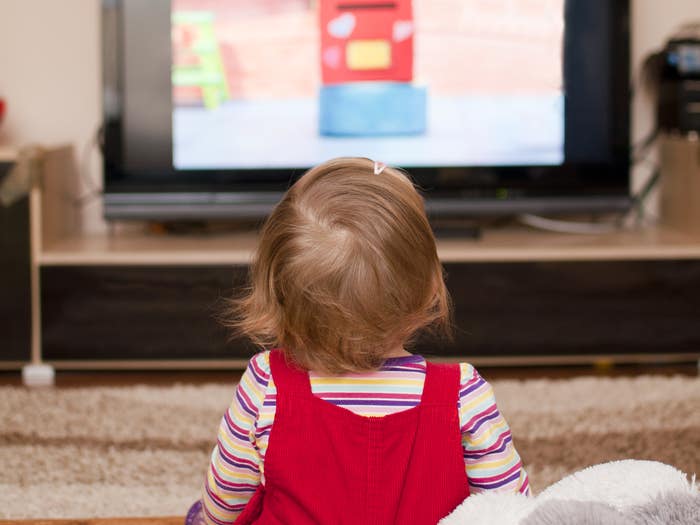Groundbreaking connection between TV viewership and child brain development
The impact of television and video exposure on babies and toddlers has raised concerns about their sensory development.

[Jan. 9, 2024: JD Shavit, The Brighter Side of News]
The impact of television and video exposure on babies and toddlers has raised concerns about their sensory development. (CREDIT: Creative Commons)
In a recent study conducted by researchers at Drexel's College of Medicine, the impact of television and video exposure on babies and toddlers has raised concerns about their sensory development.
The study, published in the journal JAMA Pediatrics, reveals that children exposed to TV viewing before their second birthday are more likely to exhibit atypical sensory behaviors.
The study focused on sensory processing skills, which refer to the body's ability to respond efficiently to information received by its sensory systems, including sight, sound, touch, and taste. The researchers analyzed data collected between 2011 and 2014 from the National Children's Study, involving 1,471 children nationwide, aged 12 to 24 months.
The children's sensory processing outcomes were assessed at 33 months using the Infant/Toddler Sensory Profile (ITSP), a questionnaire completed by parents or caregivers. The ITSP assesses various sensory-related behaviors, categorizing children into "typical," "high," or "low" groups based on their sensory responses.
The findings of the study were as follows:
At 12 months, any exposure to screens was associated with a 105% greater likelihood of displaying "high" sensory behaviors related to low registration at 33 months.
At 18 months, each additional hour of daily screen time was linked to a 23% increased likelihood of exhibiting "high" sensory behaviors related to sensation avoidance and low registration.
At 24 months, each additional hour of daily screen time resulted in a 20% increased likelihood of displaying "high" sensory behaviors related to sensation seeking, sensory sensitivity, and sensation avoidance at 33 months.
Related Stories:
The researchers accounted for various factors, including the child's age, premature birth, caregiver's education, race/ethnicity, and engagement in play or walks with the caregiver.
Lead author Karen Heffler, MD, an associate professor of Psychiatry at Drexel's College of Medicine, emphasized the potential implications of these findings for conditions such as attention deficit hyperactivity disorder (ADHD) and autism spectrum disorder (ASD). Atypical sensory processing is prevalent in these populations, and it is closely linked to repetitive behaviors seen in ASD. The study suggests that early-life screen time could contribute to the sensory brain hyperconnectivity observed in ASD.
Both ASD and ADHD are associated with detrimental behaviors in children. In ASD, atypical sensory processing can lead to irritability, hyperactivity, eating and sleeping difficulties, and social problems. In ADHD, it is linked to challenges in executive function, increased anxiety, and a lower quality of life.
At 12 months, any exposure to screens was associated with a 105% greater likelihood of displaying "high" sensory behaviors related to low registration at 33 months. (CREDIT: Creative Commons)
To address these concerns, Heffler suggests a reduction in screen time for toddlers exhibiting sensory processing symptoms, coupled with sensory processing practices delivered by occupational therapists. The American Academy of Pediatrics (AAP) discourages screen time for babies under 18-24 months and recommends limiting digital media use for children aged 2 to 5 years to no more than 1 hour per day.
Despite the AAP's recommendations, data shows that toddlers in the United States still spend a significant amount of time in front of screens. In 2014, children aged 2 and under averaged over 3 hours of screen time per day, a significant increase from 1997.
Both ASD and ADHD are associated with detrimental behaviors in children. (CREDIT: Creative Commons)
Reasons cited by parents include exhaustion and the lack of affordable alternatives.
It's important to note that this study specifically examined television and DVD viewing, not media consumed on smartphones or tablets. Nonetheless, it provides some of the earliest evidence linking early-life digital media exposure to atypical sensory processing across multiple behaviors.
The researchers stress the need for further research to better understand the mechanisms underlying the association between early-life screen time and sensory development.
For more science and technology stories check out our New Discoveries section at The Brighter Side of News.
Note: Materials provided above by The Brighter Side of News. Content may be edited for style and length.
Like these kind of feel good stories? Get the Brighter Side of News' newsletter.
Joshua Shavit
Science & Technology Writer | AI and Robotics Reporter
Joshua Shavit is a Los Angeles-based science and technology writer with a passion for exploring the breakthroughs shaping the future. As a contributor to The Brighter Side of News, he focuses on positive and transformative advancements in AI, technology, physics, engineering, robotics and space science. Joshua is currently working towards a Bachelor of Science in Business Administration at the University of California, Berkeley. He combines his academic background with a talent for storytelling, making complex scientific discoveries engaging and accessible. His work highlights the innovators behind the ideas, bringing readers closer to the people driving progress.



